Transport in London: Commuting, Costs & Tips (2025 Guide)

Moving to London? Understanding how to get around is key to living efficiently in one of the world’s busiest cities. London’s transport system is vast, complex, and — when utilised effectively — incredibly efficient.
This 2025 guide covers everything from the London Underground to cycling, buses, driving, and fare costs, helping you choose the best ways to commute, save money, and make life in the capital a little easier.
Whether you’re commuting daily or planning occasional trips into central London, this guide has you covered.
Quick Overview: Most Popular Modes of Transport
| Mode of Transport | Average Daily Use | Notes |
| London Underground | 3 million journeys | Fastest across zones |
| Buses | 4.5 million | Cheaper, more scenic |
| Overground & DLR | 1.5 million | Great for outer boroughs |
| Elizabeth Line | 800,000+ | East-West express line |
| Cycling | 120,000+ | Rising post-COVID |
| Driving | N/A | Not recommended in central areas |
1. London Underground (The Tube)
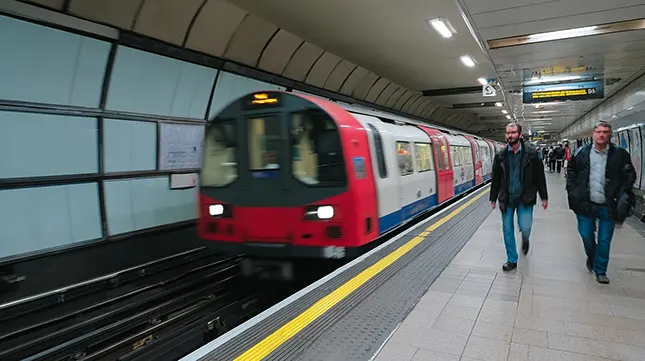
London Underground (The Tube).
The Tube is the most efficient way to travel across London.
- 11 lines (e.g., Central, Northern, Piccadilly)
- Zones 1–9, priced by distance
- Trains every 1–5 minutes at peak times
Contactless and Oyster cards offer identical fares and automatic daily and weekly caps.
2025 Underground Fare Summary (Contactless/Oyster)
| Journey | Cost |
| Zone 1 only | £2.80 |
| Zones 1–2 | £3.40 |
| Zones 1–3 | £4.00 |
| Weekly cap (Zones 1–3) | £44.00 |
🔗 Check current TfL fare zones and caps
2. London Buses

The iconic red London Buses.
Cheaper than the Tube and running 24/7 on many routes, buses are an excellent way to explore neighbourhoods and save money.
- Flat fare: £1.75 per journey
- Hopper fare: Unlimited transfers within 1 hour
- Night buses run throughout the capital
Great for Zone 3–5 commuting or areas without Tube access (e.g., Crystal Palace, Barnet)
3. Elizabeth Line (Crossrail)
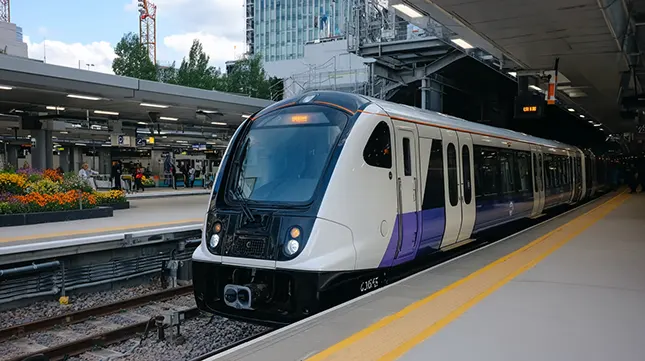
The Elizabeth Line is the newest tube line.
Launched fully in 2022 and extended in 2024, the Elizabeth Line connects:
- Reading and Heathrow (West)
- Central London (Paddington, Tottenham Court Road)
- Essex (Ilford, Shenfield)
Fast, air-conditioned and ideal for commuters from the outer boroughs or surrounding counties.
🔗 Related: 10 Safest Places to Live in London
4. Overground, DLR & Trams
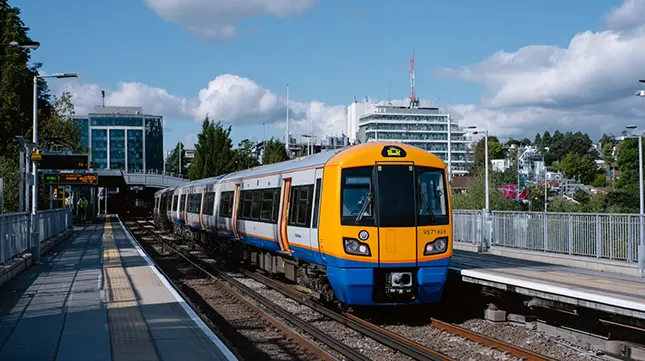
Overground, DLR & Trams.
- London Overground: Ideal for orbital routes, e.g. Stratford to Clapham
- DLR: Driverless trains in East London, useful for Canary Wharf or Greenwich
- London Tramlink: Limited to south London (Croydon, Wimbledon)
These integrate with Tube and bus systems for seamless commuting.
5. Cycling in London
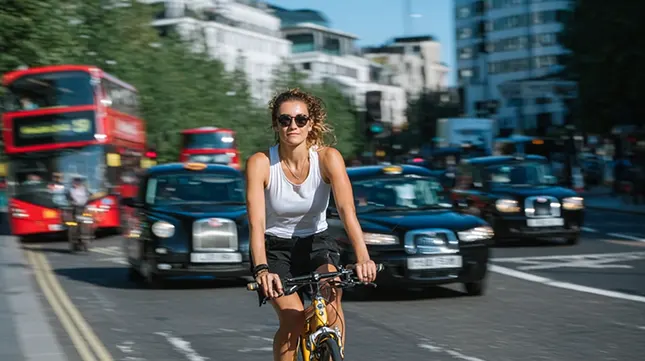
Cycling is very popular in London.
Cycling has surged in popularity since the pandemic. London now has over 160km of protected cycleways and low-traffic neighbourhoods (LTNs).
- Santander Cycle Hire: £1.65 per 30 mins or £20/month
- Cycle to Work Scheme: Save up to 40% on bikes via salary sacrifice
- Secure cycle storage available at many stations
🔗 Cycleways map and safety tips from TfL
6. Driving & Cars in London
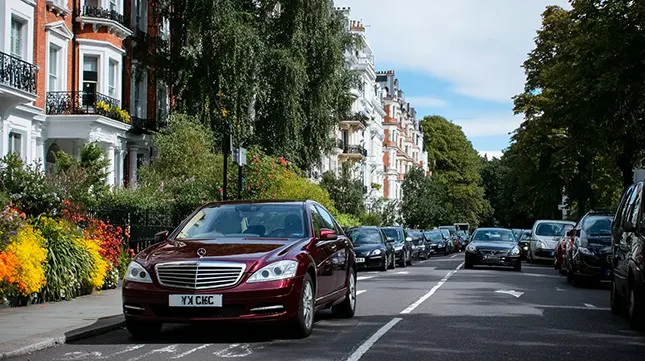
Driving in London isn’t the easiest challenge.
Driving in London is discouraged due to congestion, costs, and restrictions.
Key Costs in 2025:
| Charge | Daily Rate |
| Congestion Charge (Mon–Fri, 7am–6pm) | £15 |
| ULEZ (city-wide) | £12.50 |
| Resident Parking Permit | £90–£250/year |
Many boroughs are expanding car-free zones and removing street parking.
🔗 Check if your vehicle is ULEZ compliant
7. River, Rail & Airport Transfers
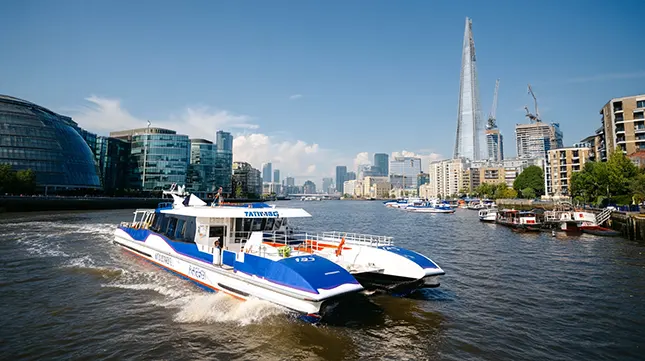
River, Rail & Airport Transfers.
- Thames Clipper: Fast and scenic river commuting (e.g., from Greenwich, Canary Wharf)
- National Rail: Key for commuting from Greater London or other UK cities
- Airports:
- Heathrow: Piccadilly Line or Elizabeth Line
- Gatwick: Gatwick Express to Victoria
- City Airport: DLR
- Stansted/Luton: Rail connections
Use the Trainline app for UK-wide journey planning.
8. Travelcards vs Pay-as-You-Go
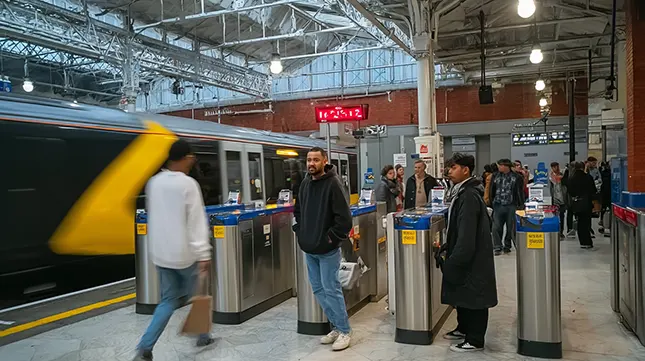
Travelcards vs Pay-as-You-Go.
| Option | Best For | Notes |
| Pay-as-you-go (Oyster/contactless) | Most users | Automatically capped |
| Weekly/Monthly Travelcards | Daily commuters | Set cost, predictable |
| Student/60+ Discount Cards | Eligible groups | Up to 50% off fares |
Check if you’re eligible for student or apprentice travel discounts
9. Smart Travel Tips
✅ Use apps like Citymapper and TfL Go to plan journeys
✅ Travel off-peak (after 9:30am) for lower fares
✅ Avoid central stations at peak rush hour (8–9am, 5–6:30pm)
✅ Walk or cycle short distances — often quicker and free
Why Using a Removals Company with Local Transport Knowledge Makes Your Move Easier
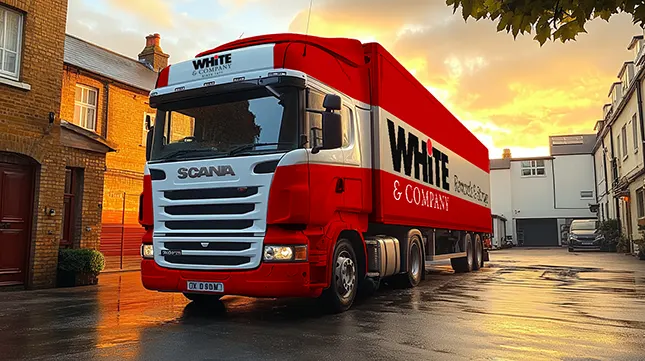
Moving to London with White & Company.
When relocating in or to London, it’s not just about packing boxes — it’s about navigating one of the most complex transport networks in the world. London’s mix of congestion zones, restricted residential streets, and tight parking controls can quickly turn a move into a logistical headache.
That’s where White & Company comes in.
With over 150 years of removals experience and deep knowledge of London’s transport infrastructure, we make your move smooth, efficient, and stress-free.
Why Choose White & Company for Your London Move?
- ✅ Street-level experience: We understand London’s tricky one-way systems, loading restrictions, and borough-specific access rules.
- ✅ Parking permit coordination: We liaise with local councils to secure short-term parking dispensation for your move day.
- ✅ ULEZ & Congestion compliance: Our fleet is fully compliant with environmental regulations, avoiding fines and delays.
- ✅ Expert timing: We schedule your move around peak traffic hours to ensure minimal disruption and cost.
- ✅ Versatility: From Georgian terraces in Islington to modern apartments in Stratford, we’ve moved clients into every type of London property.
“Moving house in London without a local removals expert is like driving without a sat nav — slow, frustrating, and full of wrong turns.”
Whether you’re moving across Zones or arriving in London for the first time, trust White & Company to handle the complexities so you can focus on settling in.
Request your personalised London removals quote today — and let our team get you where you need to be, smoothly and safely.
Final Thoughts on Transport in London
London’s transport system is one of the most advanced and connected in the world. While it may feel overwhelming at first, learning to use it wisely will save you time, money and stress.
From the Tube to Thames Clippers, each mode suits a different lifestyle and budget.
Whether you’re based in Zone 1 or commuting from Zone 5, there are efficient ways to get where you need to be.
Need help relocating near a great commuter hub? Contact White & Company for a free moving quote
FAQs: London Transport in 2025
How much does it cost to commute in London daily?
A Zone 1–3 journey costs about £8.50 per day with contactless or Oyster, capped at £44/week.
Is it worth getting a car in London?
No — with congestion, parking, and ULEZ charges, most Londoners rely on public transport.
Are London buses cheaper than the Tube?
Yes, at £1.75 per ride (with hopper fare), buses are more affordable and ideal for short trips.

Max is a seasoned writer and blogger in the real estate and home moving sectors, as well as a knowledgeable source of information for expatriates living and working abroad. His detailed insights have helped thousands of people move and live abroad with greater simplicity and ease.
Posted in: News
Leave a Comment (0) ↓


